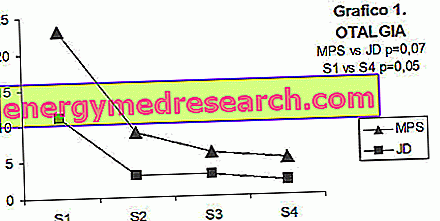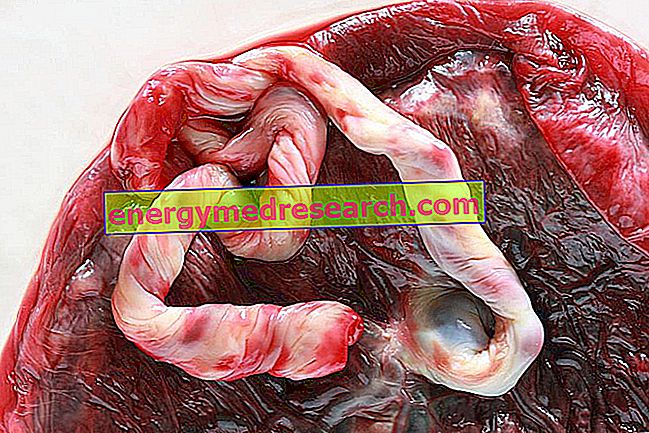By Dr. Andrea Gizdulich
Tinnitus, vertigo and otalgia are symptoms often associated with cranio-mandibular disorders (DCM). Since a few years the auricular concomitants have been described concomitantly with temporo-mandibular joint pathologies (Wright WH, Decker CJ, Costen JB) thus introducing the concept of syndrome associated today with DCM.
Several clinical studies demonstrate the existence of a significant correlation relationship (Bevilacqua-Grossi D, Bernhardt O, Tuz HH) and there are numerous attempts to explain this association (Ash CM, Casale M). There are authors who demonstrate the correlation between the severity of temporomandibular damage with auricular disorders, in particular with hearing loss, suggesting to pay further attention to the connection relationships with arthritic phenomena triggered by phlogosis (Ciancaglini R). However, the broad consideration in the literature regarding a greater incidence of auricular symptoms in patients with DCM does not find an equally valid scientific proof that demonstrates the pathogenetic connection (Turp JC). In this sense the most widely recognized principles are those that provide for the possibility of 1) a mechanical transmission of forces through the disc-malleolar ligament between TM joint and tympanic cavity, sensitive to deformations of the joint capsule (Rowicki T); 2) an involvement of the auricolo-temporal nerve, irritated by the rearrangement of the mandibular condyle consequent to dental malocclusion (Johansson AS); 3) an involvement of the trigeminal musculature consequent to the DCM picture also involving the tensor tympanic muscle and the palatal vein tensor, also
innervated by the black cranial V (Cooper BC). The malfunctioning of the Eustachian tube, due to the hypertonicity of the tensor palatal muscle, causes less aeration of the middle ear causing otocongestion phenomena and predisposing the medium to medium ear infections (Jeon YD).
The existence of a neuro-reflex connection as well as anatomical connection is also suggested by epidemiological studies (Kuttila S), performed on subjects with myogenic pain symptoms and tension headaches, which identify a significant correlation between tinnitus and muscle tenderness evoked on palpation of one or more masticatory muscles (Bernhardt O).
The tests on the reversibility of the auricular manifestations, deriving from rehabilitations or dental maneuvers (Wright EF), are however labile, even if they can indicate an influence that the dental occlusion plays on the oto-vestibular apparatus.
Therefore the aim of the present study is to investigate, at the outset, the distribution of auricular symptoms in a group of patients with DCM and to evaluate the clinical course during orthopedic therapy of recovery of physiological dental occlusion.
it is a fact that patients with DCM have a high incidence of painful and dysfunctional symptoms in their hearing system. The ear symptom most frequently associated with DCM is significantly present otalgia (48%) in both observation groups considered (MPS and JD). Otalgia is reported both as painful irradiation, complication of temporo-mandibular arthritic manifestations in the JD group, and as true myogenic referred pain in the MPD group. In the latter case, the existing interconnection appears to be clearer after confirming the simultaneous presence of muscular hypertonus with palpatory tenderness of the competent muscles (Bergamini M, Pierleoni F). Of dysfunctional symptoms the balance disorder (28%), manifested mainly by the subjects of the MPD group, was judged according to Travell's interpretation, indicative of suffering of the neck muscles (Simons DG).
From the examination of the evolution of the auricular symptomatology in subjects with DCM subjected to orthopedic therapy, the high percentage of attenuation of auditory symptoms (80%) with the use of intraoral mandibular repositioning devices was found to be more significant.
In particular, the remarkable remission of ear pain has already been demonstrated since the first trimester of orthopedic therapy.
Instead, it is questionable a functional relationship between the dysfunctional auricular symptomatology and the DCM as the etiopathogenetic relationships are more blurred and the clinical confirmations are uncertain. It should be noted, in fact, that often intermittent or remittent tinnitus undergo further characterizations of a subjective nature and therefore it is difficult to document the clinical improvement, however limited to a small percentage of cases (6 subjects). This figure in contrast with the literature (Edward F) will have to be re-evaluated.
The more often unilateral hypoacusis is presumed to be derived from the congestion of the middle ear caused by the spasm of the palatine muscles that constrict the Eustachian tube, and therefore is easily associated with clinical pictures of DCM with atypical swallowing. The weak positive but significant results are likely to be influenced by the improvement of the aeration of the middle ear as well as by the rebalancing of the muscle tone of the intra-auricular muscles which restore the correct sensory transmission.
A separate discussion instead must be made for the vertiginous manifestation more properly described as a sensation of skidding or postural uncertainty (Simons DG), accentuated by the movements, rather than the crisis of the balance understood as sensory disturbances. These events are, in fact, easily ascribable to the state of hypertonus of the lateral cervical muscles primarily involved in the postural regulation of the head and therefore would have little in common with the other auricular manifestations. This symptom dominates the cases of marked myofascial suffering (MPS) and is almost completely absent in the JD group.
The therapy performed with intraoral mandibular repositioning devices proved to be effective already in the first trimester where the most evident results were collected, confirming that the troubled neuromuscular system has rich and ready capacity for recovery.
To date the diagnostic certainty, in terms of auricular disorders, derives from the observation of the disappearance of the symptom after having undertaken the best possible dental therapy. The orthopedic therapy of mandibular rebalancing performed with removable devices was found to be effective and able to keep the results stable in the short-medium period of observation.
The presence of otalgia or dysfunctional symptomatology in the complete absence of auricular pathology should therefore always be interpreted as a possible symptom of DCM and should be investigated in the clinical evaluation of the dental patient (Cooper BC). The implications in relationship life, which derive from these diseases, should prompt us to consider DCM dental therapies as treatments for quality of life recovery (Segu M).
| Group | Otalgia | Dizziness | Tinnitus | Hearing loss |
| MPS (n = 39) | 23 (59%) | 17 (43%) | 12 (31%) | 9 (23%) |
| JD (n = 31) | 11 (35%) | 3 (1%) | 14 (45%) | 8 (25%) |
Table 1. Auricular symptoms: distribution of patients with DCM - S1.

Graph 1. Trend of otalgia from the first examination (S1) to the control after 3 months (S2), after 6 months (S3) and after 12 months (S4) of orthopedic therapy.

Graph 2. Trend of vertiginous symptomatology from the first examination (S1) to the control after 3 months (S2), after 6 months (S3) and after 12 months (S4) of orthopedic therapy.

Graph 3. Trend of tinnitus from the first visit (S1) to the check after 3 months (S2), after 6 months (S3) and after 12 months (S4) of orthopedic therapy.

Graph 4. Trend of hearing loss from the first visit (S1) to the check after 3 months (S2), after 6 months (S3) and after 12 months (S4) of orthopedic therapy.



